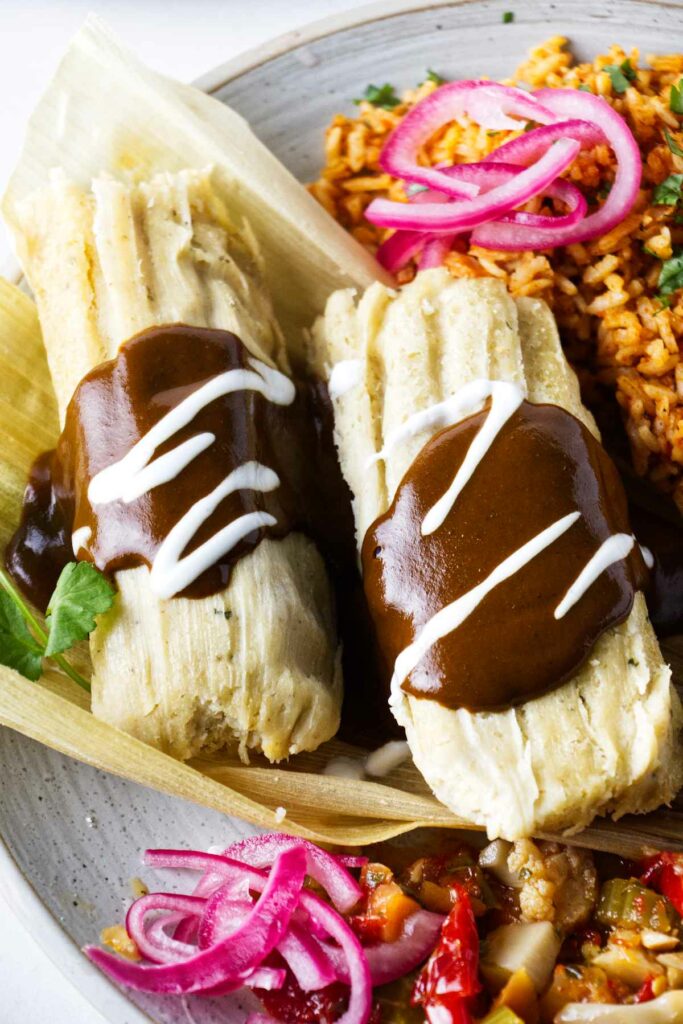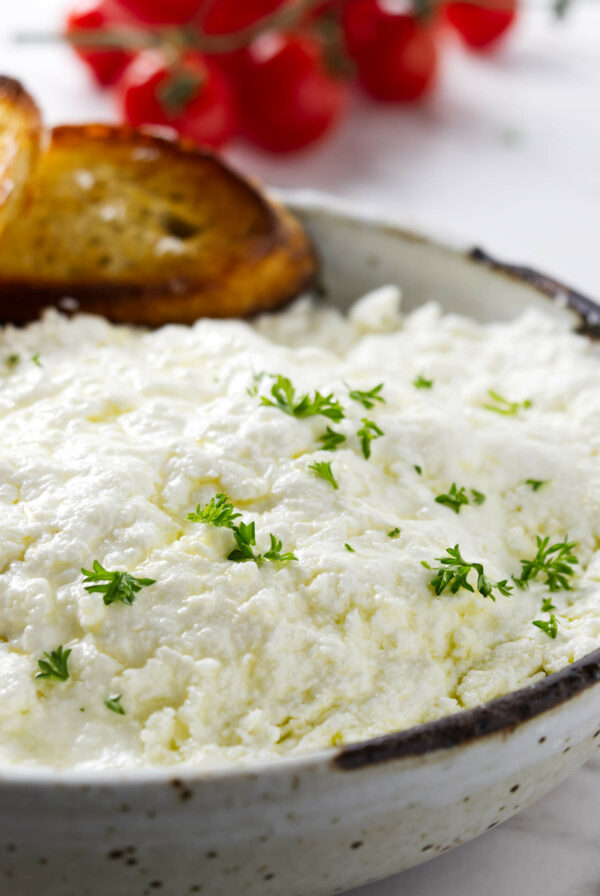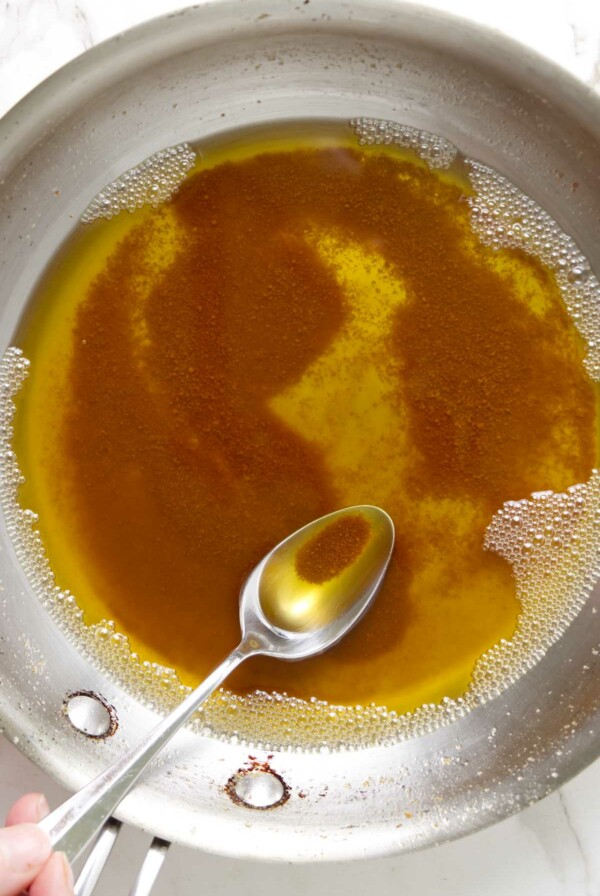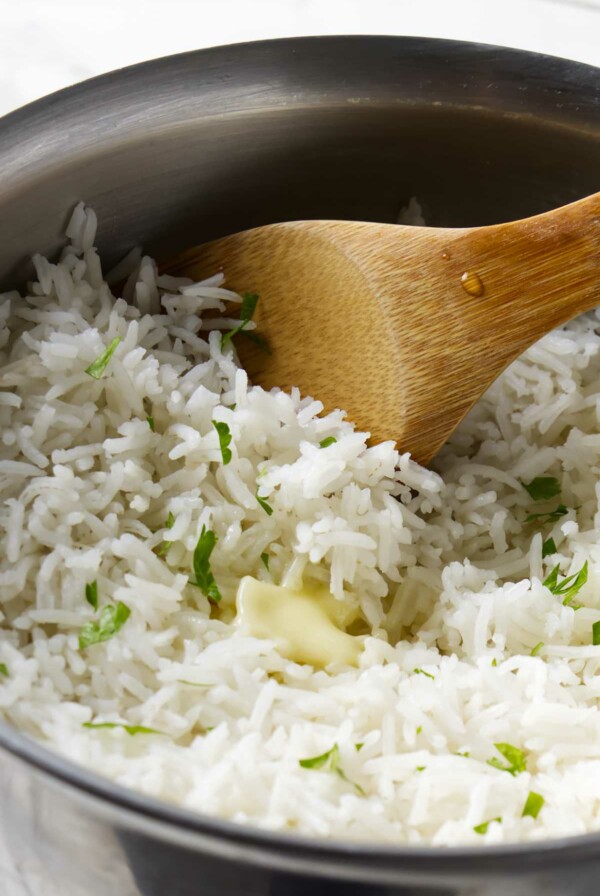This post may contain affiliate links. Please read our disclosure policy. As an Amazon Associate, I earn from qualifying purchases.
Tamales are traditionally steamed, but not everyone has a tamalera (a traditional tamale steamer) or Instant Pot on hand. So we’ve pulled together three solid methods for cooking tamales at home: the stovetop method, the Instant Pot, and a reliable oven workaround. Each method has its pros and quirks, and we’ll walk you through what works best.
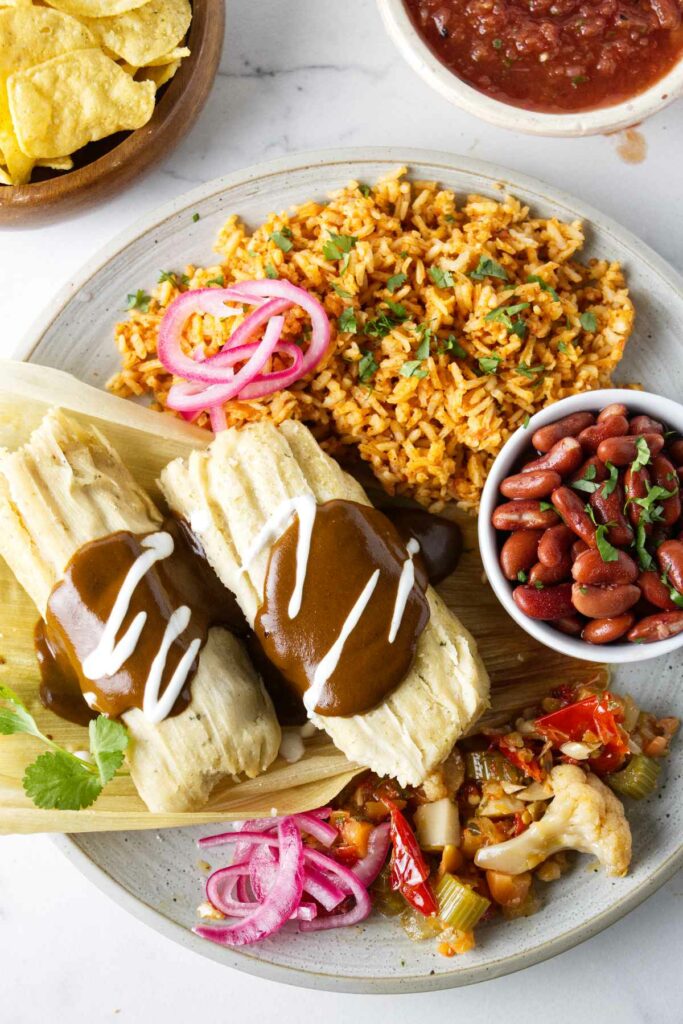
These cooking methods work for any tamales recipe, but if you want to see our full version from start to finish, check out our pork tamales recipe here. And if you want to switch things up, I’ve got a sweet tamales recipe too, a fun take on a classic.
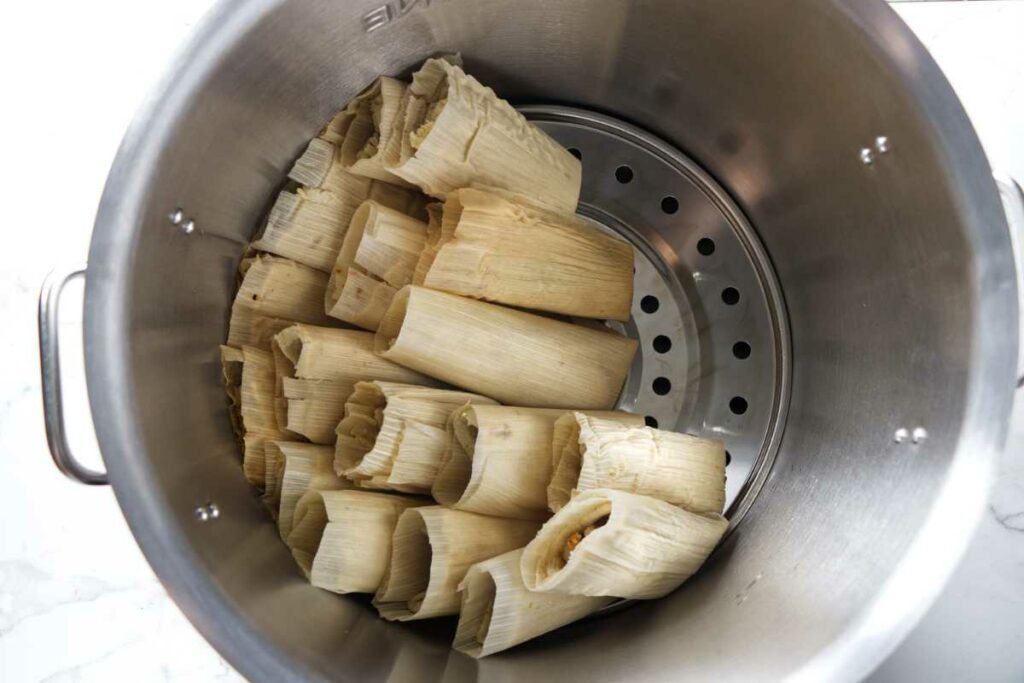
How to Steam Tamales on the Stovetop
This is the classic method most people think of when cooking tamales.
- Fill a large pot with a couple inches of water and place a steamer basket or rack inside.
- Arrange tamales upright, open side facing up, packed closely together to keep them standing.
- Lay a few extra corn husks or a clean towel on top to help trap the steam.
- Bring the water to a boil, reduce to a simmer, cover, and steam for about 60–75 minutes.
Tip: Drop a clean coin in the bottom of the pot. As the water boils, it will rattle around, giving you an audible cue that there’s still water in the pot. If it stops rattling, it’s a sign the water level is too low and it’s time to add more.
To check doneness, remove one tamale and see if the husk peels away cleanly from the masa. If it sticks, steam a little longer in 10–15 minute increments.
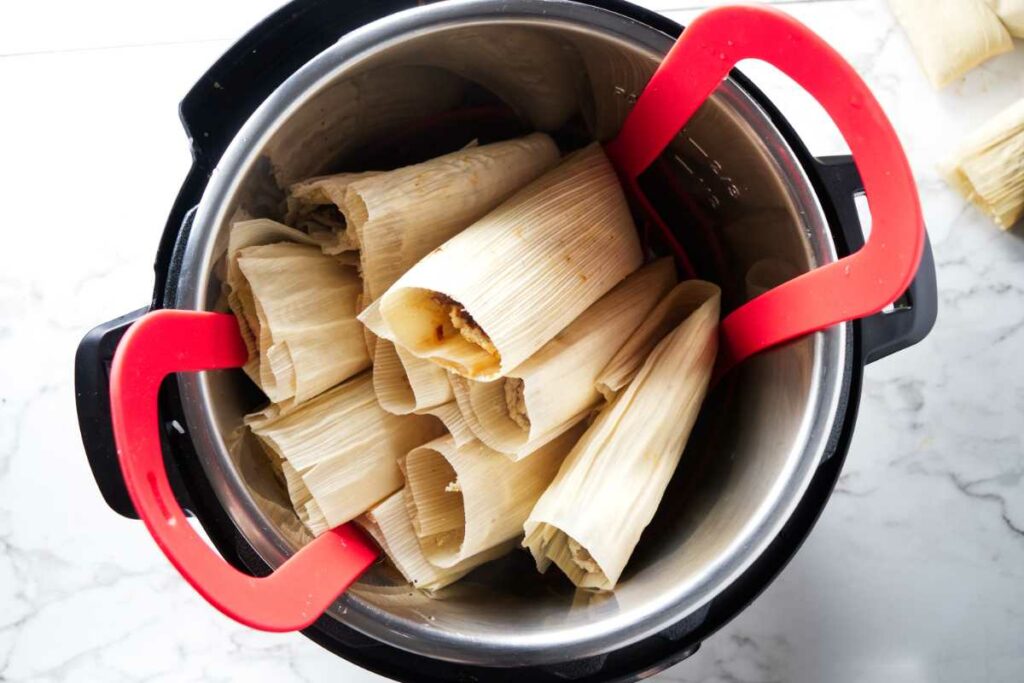
How to Cook Tamales in the Instant Pot
This is a faster, more hands-off method. It is especially helpful for smaller batches.
- Pour 1 cup of water into the inner pot and place a steaming rack inside.
- Stand tamales upright on the rack, open side up. Pack them snugly to help them stay upright.
- Seal the lid, set to high pressure for 25 minutes, and let it naturally release pressure for 10 minutes before manually releasing the rest.
The texture is very similar to stovetop steaming, just with a shorter cook time and less babysitting. The Instant Pot seals in steam and pressure, so you don’t have to monitor the water level or worry about topping it off as you go.
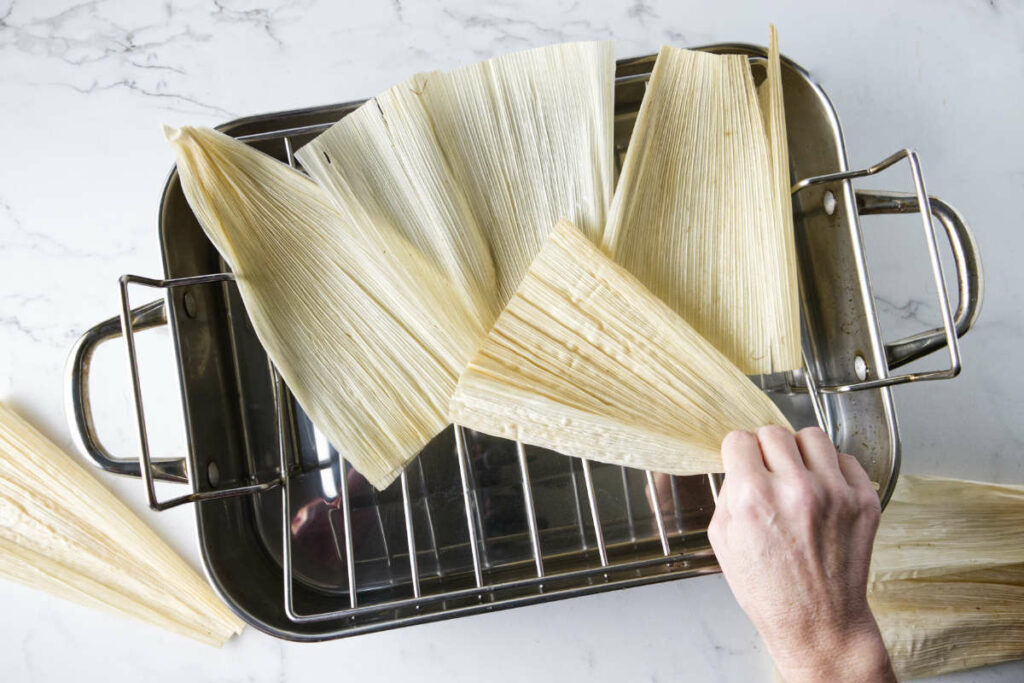
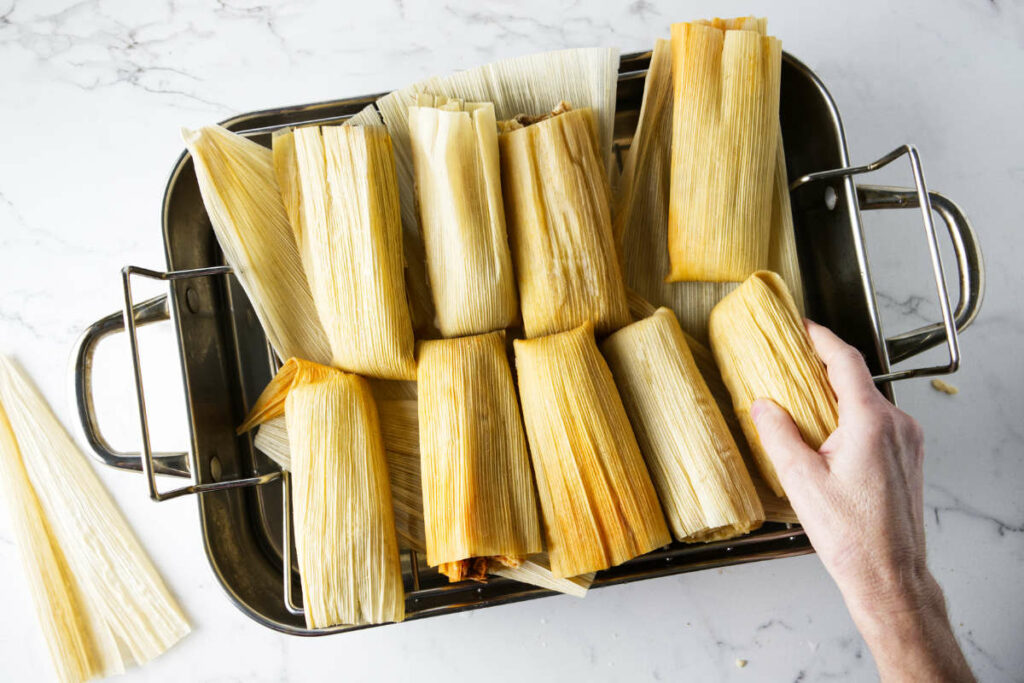
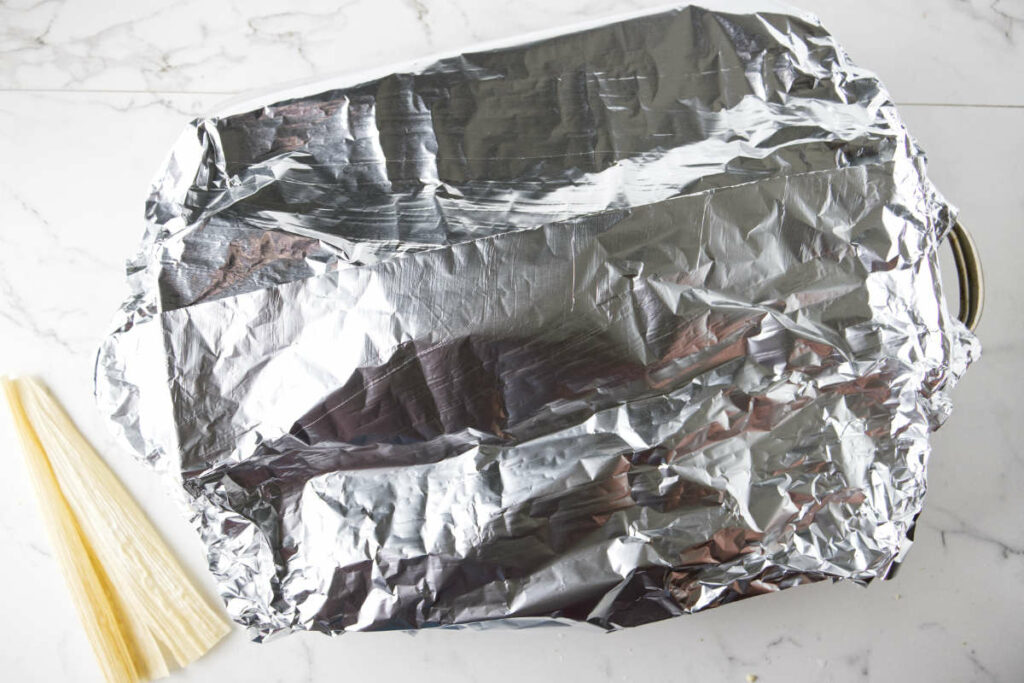
How to Bake Tamales in the Oven (Moist-Heat Method)
This method is technically baking, but it’s designed to create a moist, steam-like environment in the oven. It mimics stovetop steaming when you don’t have a traditional steamer setup. It’s not as traditional, but it works in a pinch.
- Preheat your oven to 225°F.
- Pour boiling water into the bottom of a large roasting pan. Set a rack over the water and lay a few corn husks on top to prevent tamales from falling through.
- Arrange the tamales in a single layer on top of the husks. Cover the pan tightly with foil to hold in steam.
- Bake for 45–60 minutes, checking occasionally to make sure there’s still water in the bottom of the pan.
You can also use a Dutch oven with a rack and follow the same basic method.
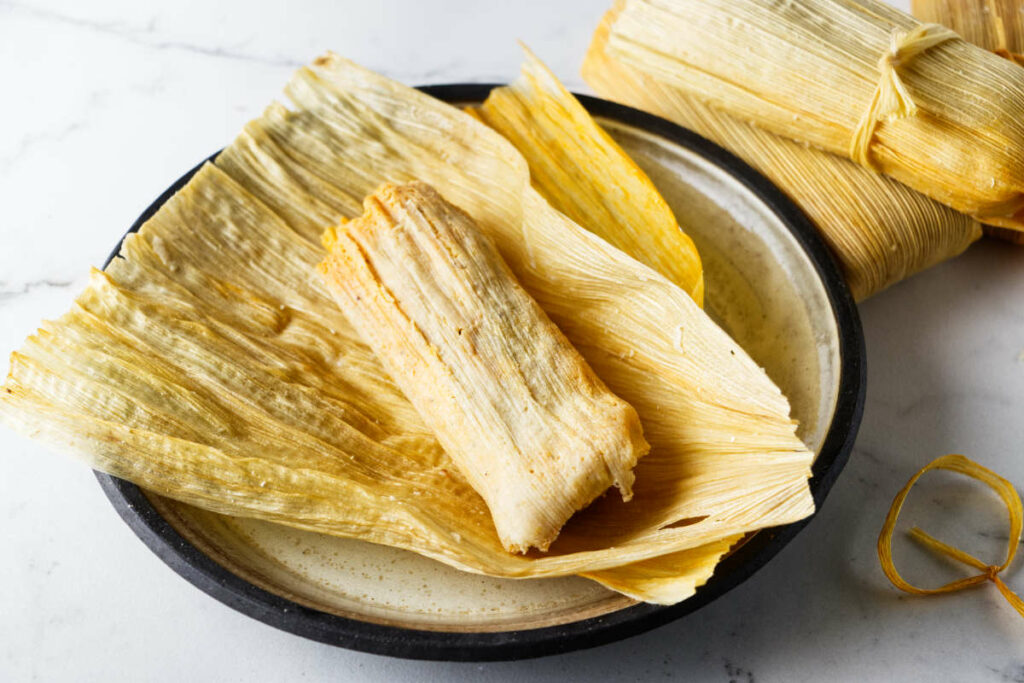
How to Tell When Tamales Are Done
Tamales are ready when the masa pulls away easily from the husk. If it’s sticking or feels gooey, they need more steam time.
Letting them rest for 10–15 minutes after steaming also helps the masa firm up. They often feel too soft straight out of the pot, but firm up perfectly as they cool slightly.
Common Mistakes That Lead to Soggy Tamales
- Not letting them rest: Masa needs time to set after steaming.
- Too much moisture in the dough: If your masa was too wet to start, it may not firm up well.
- Pouring water directly over tamales when refilling: Always pour down the side of the pot to keep steam consistent and avoid waterlogging the tamales.
If you’re running into texture issues, check out our post on how to fix mushy tamales for more tips.
